It is better to see something once than to hear about it a thousand times,isn’t it?This quote reminds me of Ladakh, a place blessed with snow-capped mountains, dazzling in the bright sun and kissing the blue skies. The vast barren land, wild purple flowers, rapid streams procure birth from an unknown source flowing down flawlessly and the adorable marmots, all ready to get cuddled, make this place no lesser than a paradise. Besides, the local inhabitants, their culture and ambrosial food act as a crème de la crème to the magnificence of this place. Let’s take you on a cultural tour of Ladakh’s most important festival, known as “
Hemis Festival”. Hopefully you can plan for the upcoming years too.
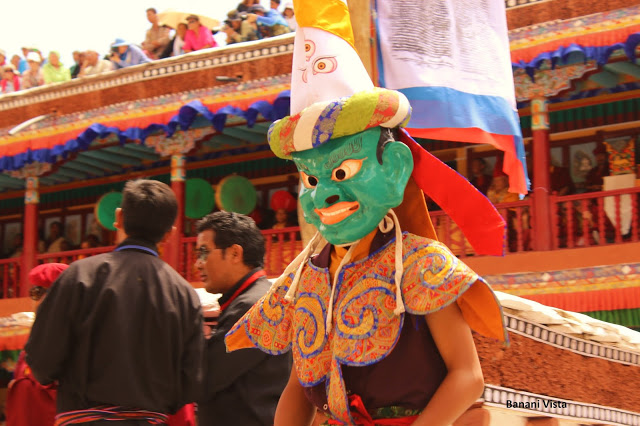
Mask Dance
After stepping out of the vehicle, I started following the crowd uphill. The landscape provided breathtaking panorama,comprised of huge Rocky Mountains and thin vegetations. I spotted an inclined truck loaded with locals (ladakhis).In the midst of the hill was sparkling distinctively- The Hemis Monastery, almost 40 kms from Leh, it is the biggest Tibetan monastery in Ladakh. People seemed rushing towards it not only because it is a holy shrine, but also due to the festival- the celebration to commemorate the birth anniversary of Guru Padmasambhava. He is known as the reincarnation of Guru Rinpoche, famously known as Buddha. Guru Padmasambhava is the one who came up with the ideology of‘
Vajrayana Budhhism’. This tantric form of Buddhism not only overpowers the evil but also converts some into protectors and guardians.
As Mahatma Gandhi truly said, “A Nation’s culture resides in the hearts and in the soul of the people.” Undoubtedly, Hemis festival best suits the above quote. It is one of the best ways to enter the hearts of the local people and understand their rituals, their beliefs and their fears. The festival is 300 years old approximately and is still celebrated with great pomp and show. Since, my family has been culturally and artistically rich, so seeking out various traditions and celebrations is deeply rooted in my genes. Hence, I was all set to understand and unveil the historical importance of this remarkable festival.
The Hemis Monastery was trailed by multiple food, clothing, souvenirs and handicraft stores. People mustered to the stalls like bees flock the flowers. Finally we reached the main entrance after a walk of almost 1.5 kms which leads to the main courtyard of the monastery. No wonder why this festival is known as “The Kumbh Mela of the Himalayas”. There was hardly any place left to place my foot properly, however I managed to do so. The visitors were a mix of locals and tourists. We learnt that the locals came from nearby villages early morning to be a part of the festival. The floor, stairs and balcony were stuffed with visitors, spiritualists, ministers and media people. One can find visitors from America, Russia, Korea, Poland and various parts of India too. Generally, people go for pre-bookings, 3 months approx. and reserve their seats accordingly,to be a part of the celebration.
 The main shrine, head monk sitting reciting hymns The main shrine, head monk sitting reciting hymns |
|
The moment I enter the monastery, I happened to see the two storey high silk Thangka (sacred painting) of Padmasambhava. This property, which has a high spiritual importance, was displayed for public view for a few hours, basically between 4 A.M and 09:30 A.M. Glad that I was a part of this festival. During this year, 2016, it was held in 14th and 15thJuly. Hemis festival can be witnessed every year.However, the silk Thangka can only be seen once in twelve years and this year was of one of them.
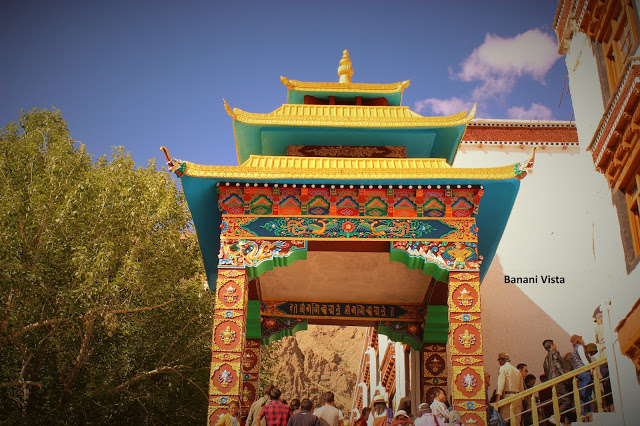 The main gate The main gate |
|
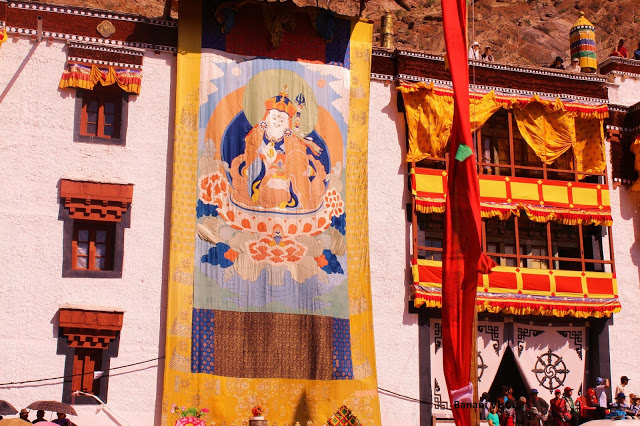 The thangka The thangka |
|
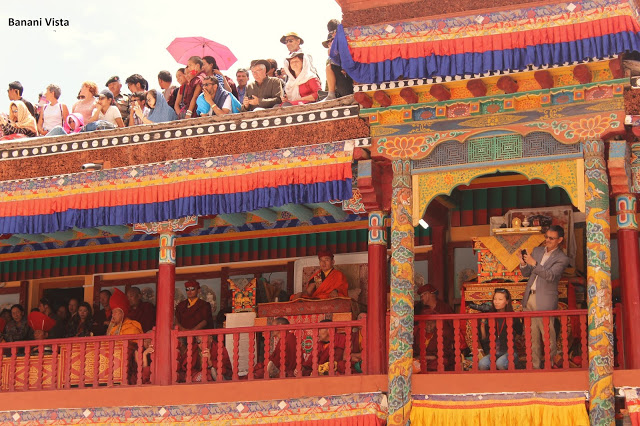 The shrine The shrine |
|
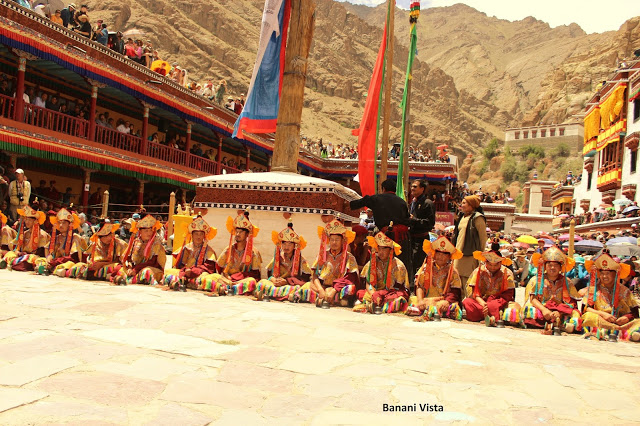 Disciples sitting in a row Disciples sitting in a row |
|
The two-day festival marks the celebration of the victory of good over evil. A festival which gives a way to mingle with the locals, understand and taste their culture.The festival was commenced by blowing two long tail horns by two
“Chhams” (lamas of the monastery) and displaying the portrait of
Gyalwang Drukpa- head of drukpa lineage, one of the schools of Vajrayana Budhhism. Followed by this,was the performance of masked monks.
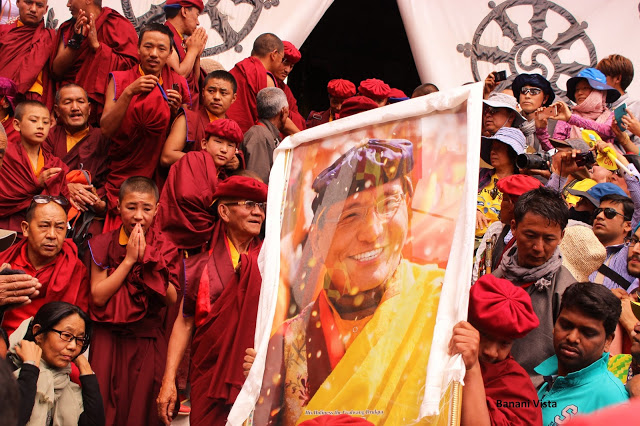 Gyalwang Drukpa- head of drukpa lineage Gyalwang Drukpa- head of drukpa lineage |
|
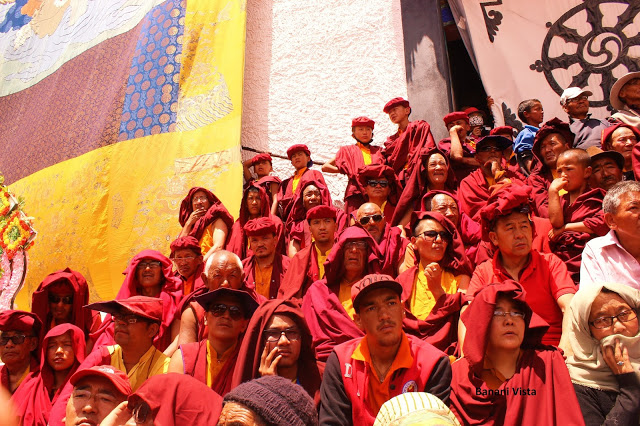
The Monks from different parts of the world
The masks either depicted an evil force or demonstrated the Divine. The whole performance was of a typical representation of a spiritual story in dance drama form which exhibited how the protectors or the guardians protect the sentient beings from the evil. The monks rehearsed for a long time to perform for this big day. They danced in a unique beat; movements are typically slow and uniform. All the monks represent specific deity with cymbals and drums in their hands. Few were seen holding a garland of skulls along their chests demonstrating evil. The masked monks dance around the centrally located pole situated in the middle of the courtyard. The monks were in vibrant and colourful attires with dazzling brocades.
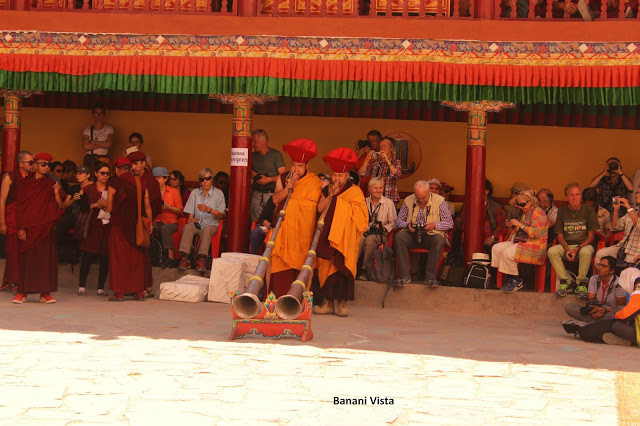 Commencement of the event by blowing the horns Commencement of the event by blowing the horns |
|
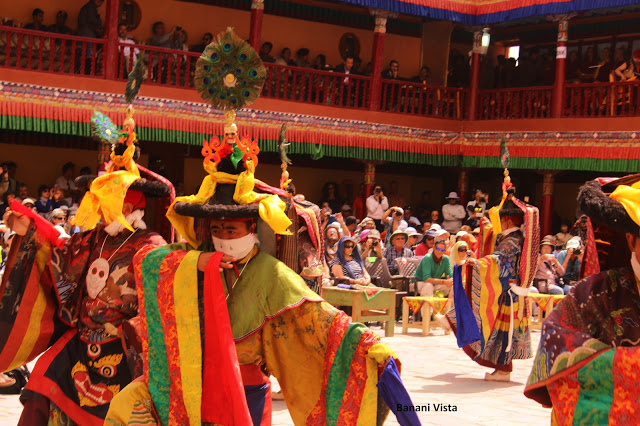 The Evil and demons The Evil and demons |
|
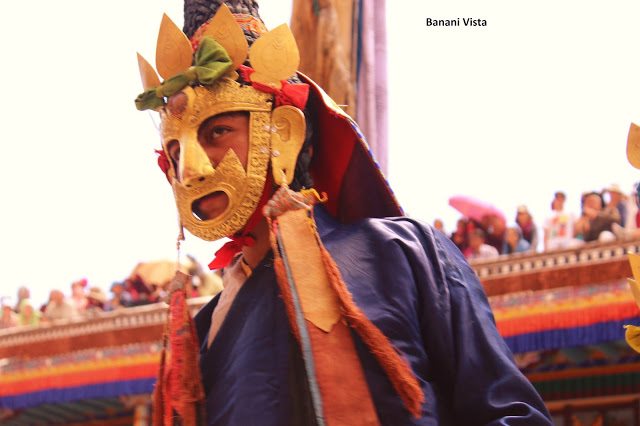 The protector The protector |
|
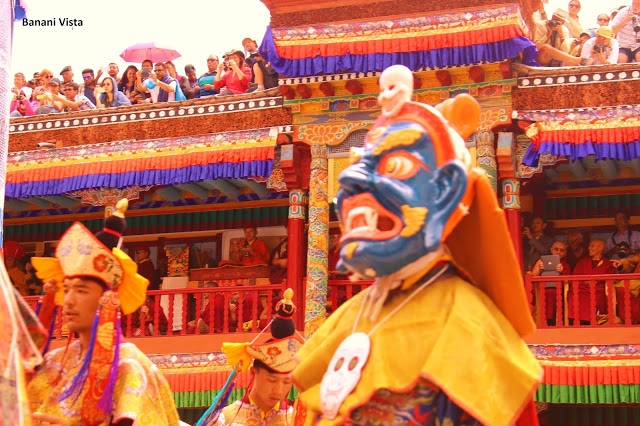 The Guardian The Guardian |
|
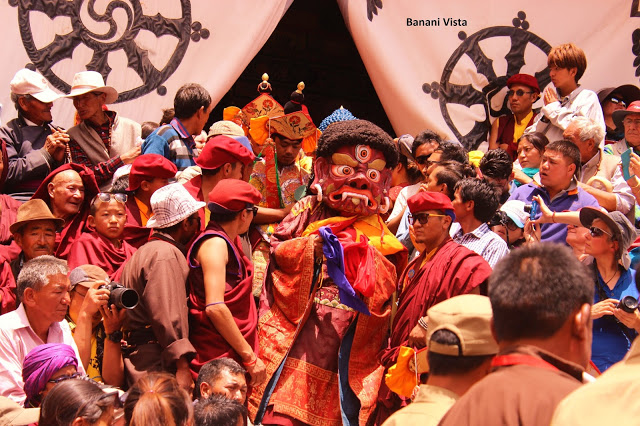 The Guardian The Guardian |
|
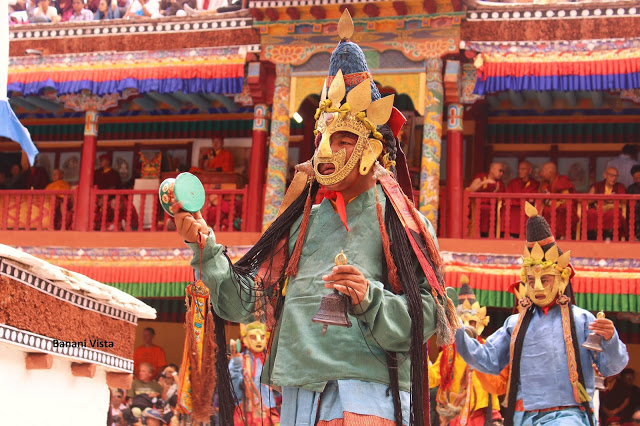 The messengers of God The messengers of God |
|
Multiple performances were presen
ted by the masked monks in order to show the spread of positivity before the arrival of Guru Padmasambhava along with Budhha Shakyamuni .The Divine arrived with their disciples in order to bless the beings. They go round the courtyard and sit facing the public. In front of them were seated the disciples who were given money which was also a part of the ritual. The festival came to an end after few marvelous performances.
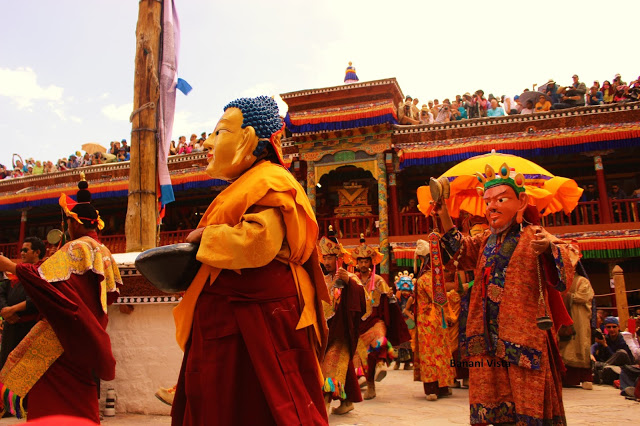 Buddha Shakyamuni Buddha Shakyamuni |
|
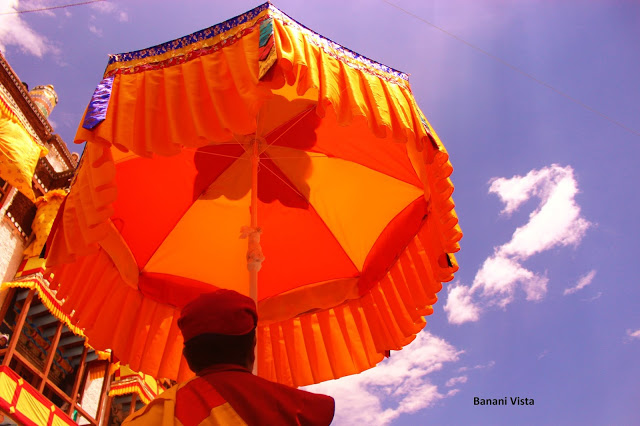 A man holding an umbrella for Guru Padmasambhava A man holding an umbrella for Guru Padmasambhava |
|
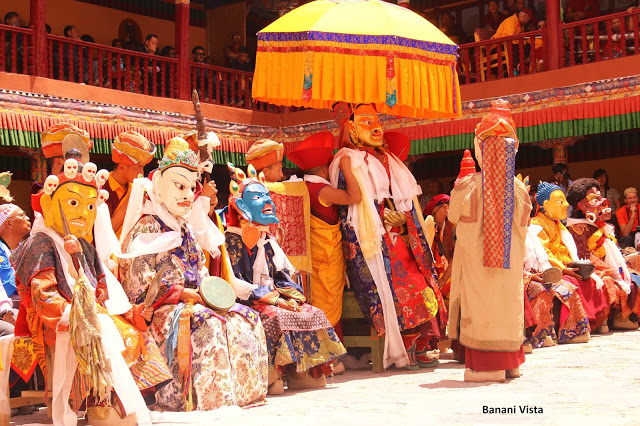 Guru Padmasambhava in the middle Guru Padmasambhava in the middle |
|
We then headed to the main temple where a huge statue of Guru Padmasambhava and Buddha was situated. I felt holy and pious from within. We traced the tracks from the main temple to the Hemis museum where one can get all the information right from the monastery to the festival. It was totally worth visiting.
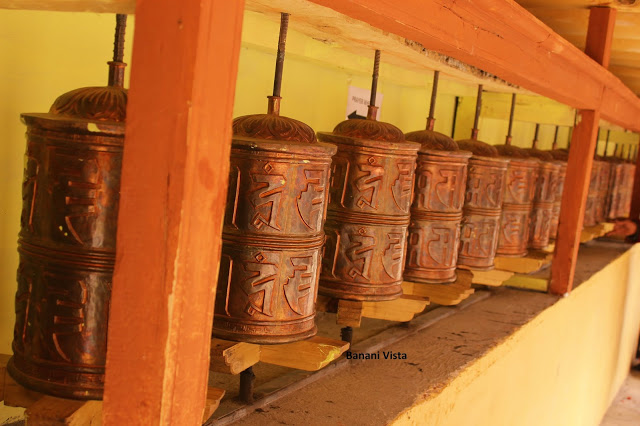 Prayer Wheel Prayer Wheel |
|
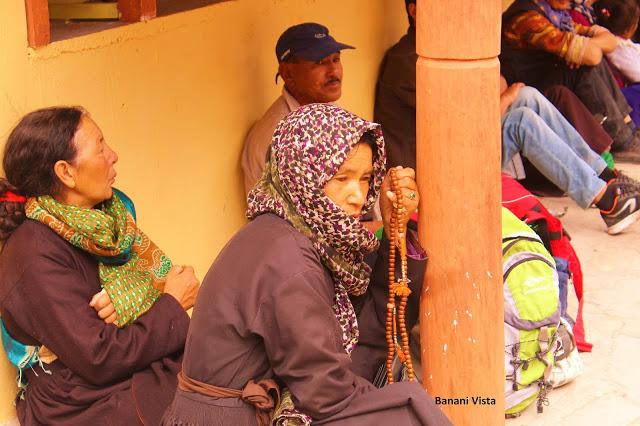 Pilgrims around the world Pilgrims around the world |
|
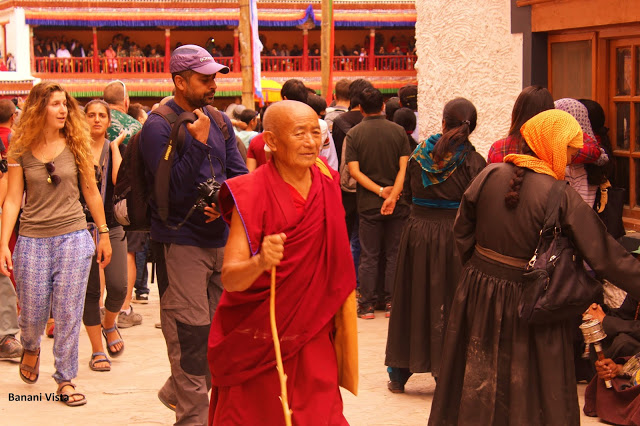 Visitors around the world Visitors around the world |
|
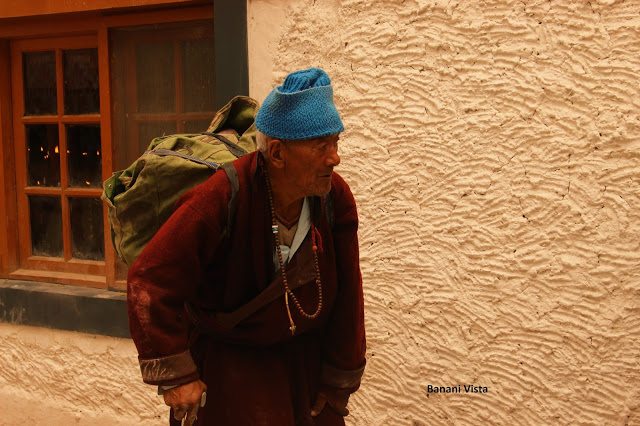 A Pilgrim A Pilgrim |
|
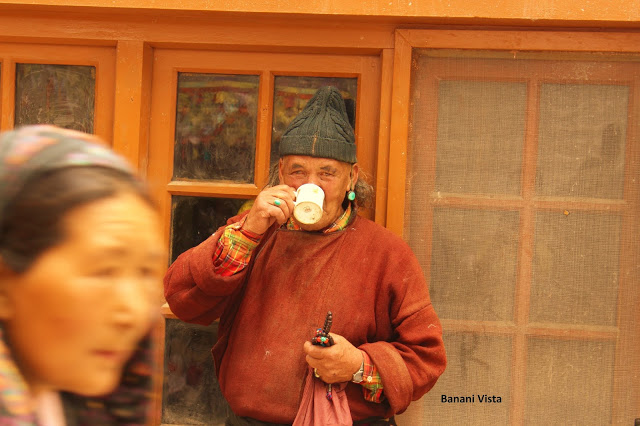 A pilgrim drinking butter tea A pilgrim drinking butter tea |
|
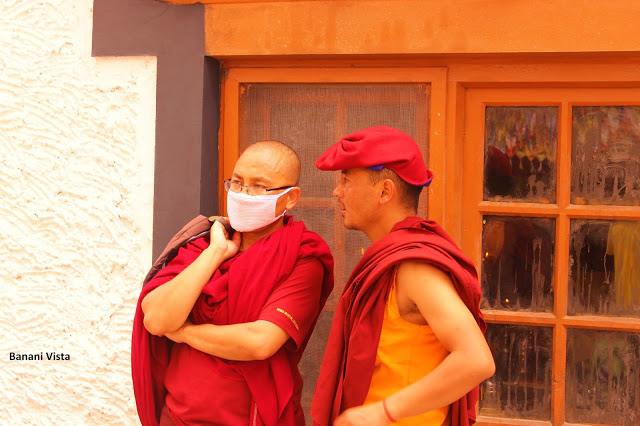 Monks Monks |
|
 A religious face A religious face |
|
Like other holy places, this place also offered us sacrament- butter tea. Please do not forget to take this as it is said that it is not just a food but blessing of God. Like me, I am sure visiting this place and being a part of the festival make you feel blessed and fortunate too. So come along with your family and friends to enjoy the extravaganza of this unique festival and be an active part of the Ladakhi culture as you have to taste their culture to understand them.
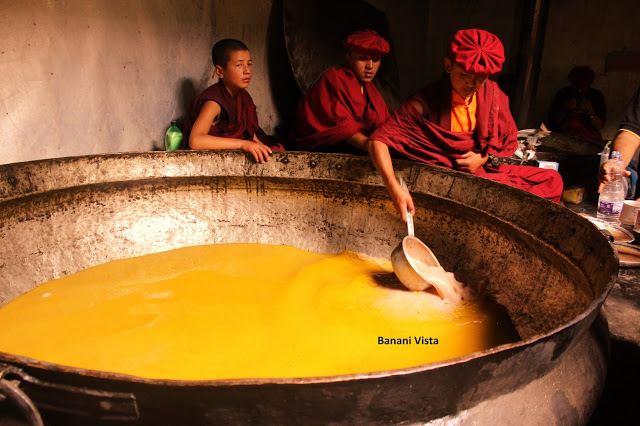 The young monks serving butter tea The young monks serving butter tea |
|
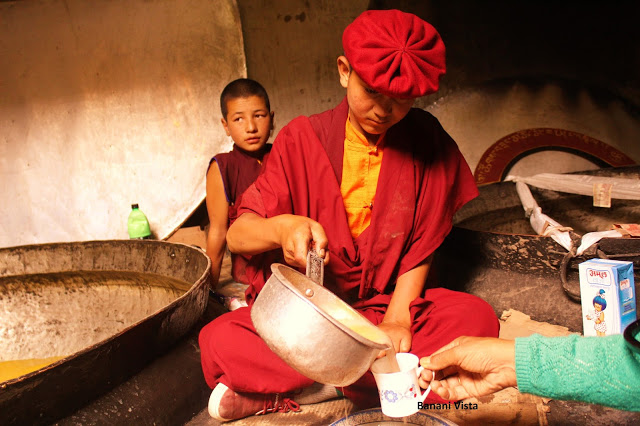 Butter tea Butter tea |
| |
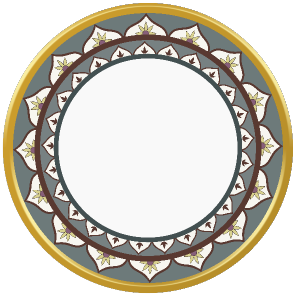





 Mask Dance
Mask Dance
 The main gate
The main gate The thangka
The thangka The shrine
The shrine Disciples sitting in a row
Disciples sitting in a row Gyalwang Drukpa- head of drukpa lineage
Gyalwang Drukpa- head of drukpa lineage The Monks from different parts of the world
The Monks from different parts of the world
 Commencement of the event by blowing the horns
Commencement of the event by blowing the horns The Evil and demons
The Evil and demons The protector
The protector The Guardian
The Guardian The Guardian
The Guardian The messengers of God
The messengers of God Buddha Shakyamuni
Buddha Shakyamuni A man holding an umbrella for Guru Padmasambhava
A man holding an umbrella for Guru Padmasambhava Guru Padmasambhava in the middle
Guru Padmasambhava in the middle Prayer Wheel
Prayer Wheel Pilgrims around the world
Pilgrims around the world Visitors around the world
Visitors around the world A Pilgrim
A Pilgrim A pilgrim drinking butter tea
A pilgrim drinking butter tea Monks
Monks A religious face
A religious face The young monks serving butter tea
The young monks serving butter tea Butter tea
Butter tea